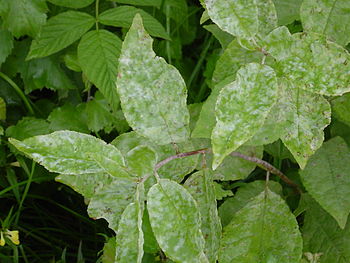So, how do you figure out what is going on in a garden that is not performing as well as you would like it to? First, try to be objective about your garden. Ask yourself these questions and see if anything stands out.
- Are you using good quality seeds?
- Are you choosing plant varieties that are suited to your climate?
- Are you planting the same thing in the same spot every year?
- Have you tested your soil to see if it is missing nutrients?
- Have you checked the pH of your soil?
- Have you added any organic materials recently?
- Is your drainage good enough?
- Are you watering often enough, or deeply enough?
- Are your problems caused by disease?
- Are you cleaning up the garden completely (preferably in the fall so that pests can’t overwinter) – all the annual plants, all the leaves at least once a year and burning or removing any diseased plants?
- If you are composting garden debris, is your compost pile getting hot enough to kill pests and diseases?
- Are the leaves of your plants showing any signs of disease or nutritional deficiencies?
- If you are a smoker are you washing your hands after smoking to prevent any of the tobacco born diseases from entering your garden?
- Are you using proper sanitation in your garden? Do you pick vegetables while the leaves of your plants are damp or wet? Do you harvest from diseased plants last so that you do not spread diseases to the remainder of your garden?
- Do you wash your hands and forearms well after you harvest from diseased plants?
If none of these questions make you say “well, maybe I should…” then you need to do some research. I recommend going to one of the gardening websites and working through some of the how-to articles and videos. Sometimes you have just missed something, or forgotten something. There are websites that have all sorts of information about growing vegetables and fruits. Here is a link to the Vegetable Growing page at Johnny’s. It includes articles, and videos about all sorts of relevant topics.
The UC Davis Agriculture and Natural Resources Catalog gives you access to a combination of paid for and free resources. You can download an amazing collection of free articles. I have also invested in a couple of good quality books on pests and plant diseases. The faster that I can identify a problem, the faster I can fix or control it.
The National Gardening Association has a significant Pest and Disease Guide available online. Articles with pictures and lots of how-to videos.
Your local county extension office may also have resources to help you. Many areas have Master Gardener Programs that provide resources to the general public.
Good Luck with your gardening endeavors! Gardens can be an amazing source of joy and frustration at the same time.

